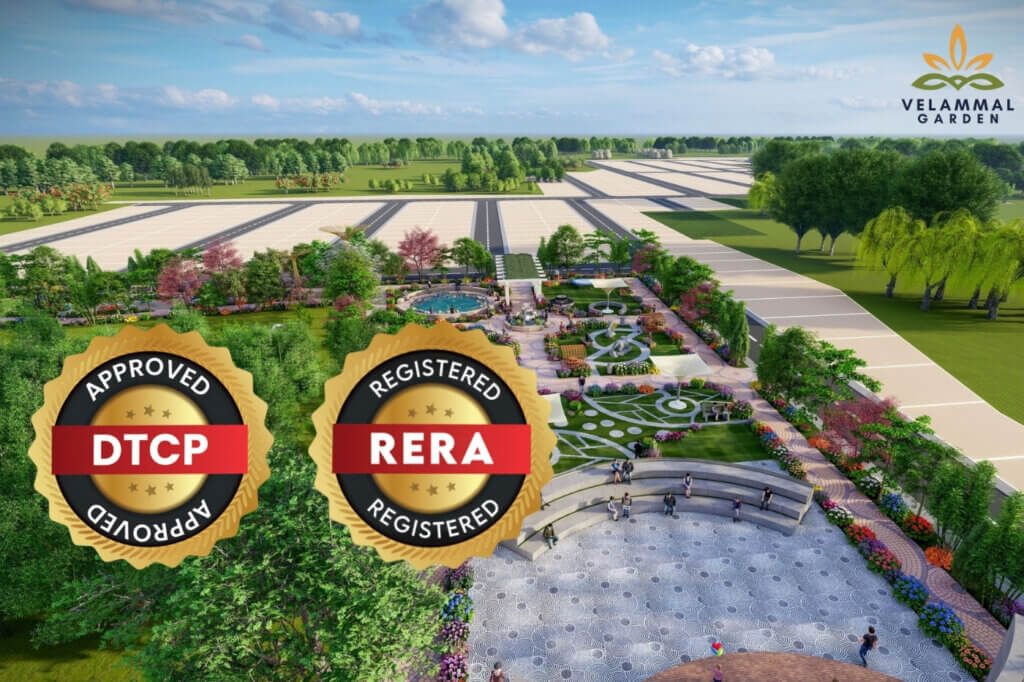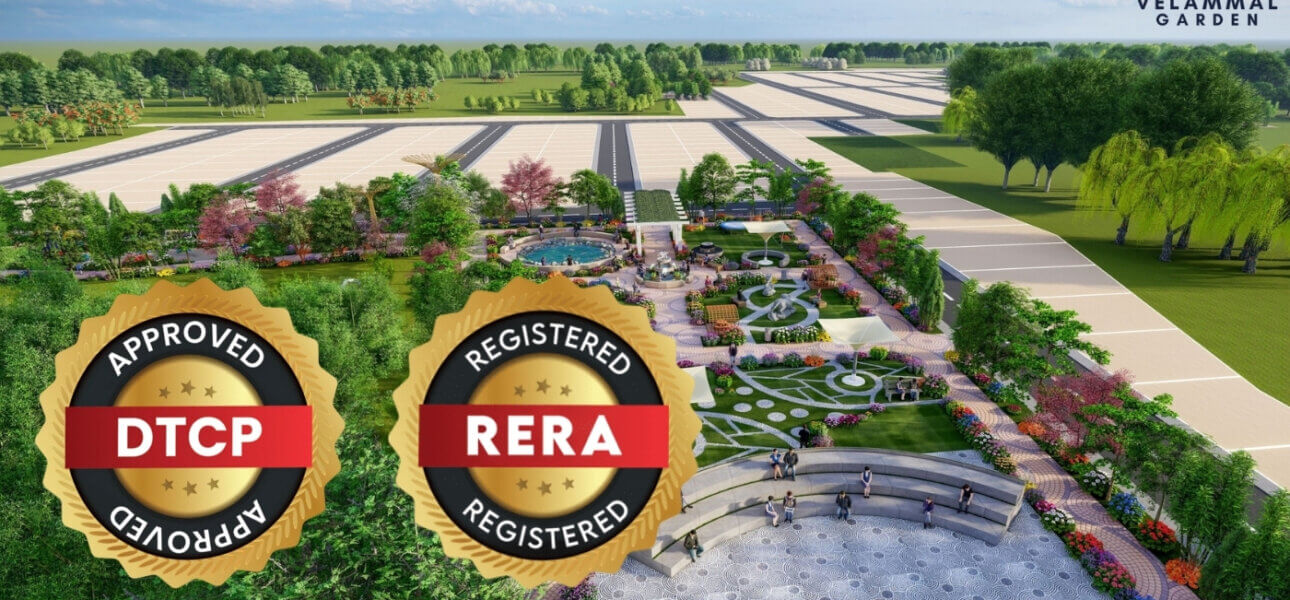Buying a plot is exciting, but the smartest buyers in Chennai’s Padappai–Oragadam belt confirm one thing first. Paperwork. A clear set of NOCs and utility tie-ins ensures your dream home is buildable, bankable, and future-proof. Here is a simple checklist to help you verify the essentials before you pay the booking amount.

Why NOCs and utilities matter for DTCP and RERA projects
A DTCP and RERA backed layout means the project follows planning norms and transparent disclosures. Still, every micro-market has local service agencies and practical site-level checks. Confirming NOCs and utility readiness saves you from later surprises like delayed connections or usage restrictions.
Start with layout legality
Before you get into utilities, confirm the project’s basic compliance.
- DTCP approval number and copy of the sanctioned layout
- RERA registration number and project status with approvals listed
- Parent title deed, legal opinion, and encumbrance certificate for the survey numbers
- Patta and FMB sketch alignment for the exact plot location
- Clear approach road and right of way recorded in the layout plan
A project like Velammal Garden, set in the Padappai–Oragadam growth corridor, highlights approvals upfront and simplifies buyer verification. Explore the site plan and speak to the team at velammalgarden.com for document walkthroughs.
Core utility clearances to verify
Utilities determine livability from day one. Ask for these in writing and match them with site reality.
- Power
- Feeder source and sanctioned load for the layout
- TANGEDCO NOC or service readiness letter for domestic connections
- Transformer installation, LT cabling, and meter room provision
- Water
- Borewell yield test reports or piped-water tie-up details
- Common overhead tank capacity and distribution network
- Water quality parameters and planned maintenance schedule
- Sewerage and sanitation
- Underground sewer lines or septic tanks with soak pits as per norms
- STP provision if the layout size mandates it
- Drain gradients and manhole access points marked on plan
- Stormwater drainage
- Peripheral and internal drains sized for monsoon flow
- Outfall route to the nearest legal drain without flooding neighbouring lands
- Silt traps and grates to keep roads dry after heavy rain
- Roads and street lighting
- Road formation width and thickness as per approval drawings
- Streetlight poles, cabling, and switching panel installed and tested
- Solid waste
- Collection bay earmarked and routine pickup arrangement with local body
Location-specific checks for Padappai–Oragadam buyers
This belt blends residential layouts with large industrial campuses. That brings both opportunity and a few extra due-diligence points.
- Check distance to arterial roads like the ORR and GST connectors for easy commuting
- Confirm no overhead HT lines crossing your plot, and verify corridor setbacks if lines run along project edges
- In low-lying pockets, ensure stormwater outfall is connected and roads have camber to prevent waterlogging
- For corner or park-facing plots, recheck final pegging matches the approved layout to avoid minor shift errors
Special NOCs that may apply
Not every project needs all of these, but it is useful to ask.
- Environmental clearance for larger townships past threshold norms
- Fire safety NOC if common facilities cross the stipulated built-up limits
- Groundwater NOC in notified zones with extraction controls
- Highway or PWD access NOC if the layout gates open onto a classified road
- Panchayat or CMDA service connections acknowledgement depending on jurisdiction
Bankability and loans
Banks prefer clean DTCP and RERA projects with ready utilities. When you apply for a home loan or a top-up for construction, sanctioned load letters, water and sewer acknowledgements, and road completion certificates can speed approvals. Ask the developer for a banker’s kit containing copies of title, approvals, and utility readiness notes.
On-site verification: quick walkthrough
Carry the approved layout printout and do this 30-minute round.
- Locate your plot pegs and measure frontage and depth
- Walk the nearest manhole or sewer chamber and confirm flow direction
- Spot the transformer, LT panel, and nearest streetlight pole
- Check stormwater grates and outfall path after the lowest curve in the road
- Confirm water tank location and distribution line markers
- Photograph all markers that support the promises made in brochures
Red flags to avoid
- Utility trenches not closed or haphazard manholes at different road levels
- Transformer space shown on plan but missing on site
- No proper outfall for stormwater, especially near the monsoon
- Inconsistent plot measurements versus FMB or the pegged corners
- Title or EC gaps beyond the developer’s explanation
How a good developer makes it easy
Transparent teams share a single folder with approvals, utility letters, test reports, and as-built drawings. They also escort buyers on a technical site walk. At Velammal Garden, you can request a utility readiness checklist and a banker-friendly document pack so you can book with confidence. Start a conversation at velammalgarden.com to get the latest pack and schedule a site visit.
Final checklist to tick before booking
- DTCP approval copy and RERA registration verified
- Parent title, EC clean, and Patta/FMB match confirmed
- Power NOC and transformer installed with LT network ready
- Water source, tank capacity, and line routing documented
- Sewer and stormwater networks complete with clear outfall
- Roads formed to approved width and streetlights functional
- Any special NOCs required have been obtained and shared
- Bank’s legal and technical teams comfortable with documents
FAQs: NOC & utility clearances what to check before DTCP RERA Tamil Nadu
What is the difference between DTCP approval and RERA registration for a layout
DTCP approval confirms the layout’s planning compliance and road widths as per Tamil Nadu norms. RERA registration ensures project transparency, timelines, and escrow discipline. You need both for safer buying in the Padappai–Oragadam belt.
Which utility NOCs are must-have before I book a plot
Power readiness from TANGEDCO, confirmed water source with distribution plan, completed sewer or septic plan, and functional stormwater drains. Also check road formation and streetlights so you can start construction smoothly.
How do I verify documents without running pillar to post
Ask the developer for a consolidated digital folder: DTCP approval, RERA certificate, title and EC, Patta and FMB, utility letters, and completion notes. Compare these with on-site markers like transformer, manholes, and water tank.
Do banks insist on utility clearances for plot or construction loans in Chennai
Yes. Lenders favour layouts where power, water, sewer, and roads are demonstrably complete. A clear approvals file plus utility readiness letters can accelerate legal and technical sanction.
Are there location-specific risks in Padappai–Oragadam I should watch for
Check for stormwater outfall, HT line corridors, and accurate pegging against the FMB. Because this is a fast-growing corridor, ensure approach roads are clear and the layout’s internal roads are formed as per the sanctioned plan.
Choosing a plot is not just about price and location. It is about certainty. With the right NOCs and utilities verified, you are set for a stress-free registration and timely house construction. When you are ready to evaluate options, explore Velammal Garden’s approved layout and speak to the team for a guided document review at velammalgarden.com.


